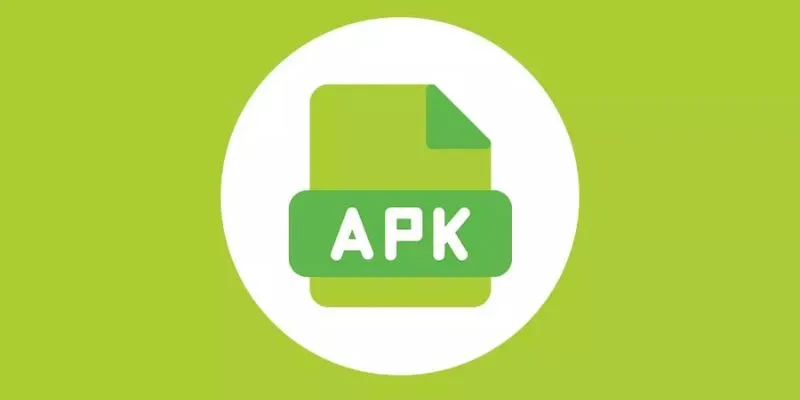Click here to buy secure, speedy, and reliable Web hosting, Cloud hosting, Agency hosting, VPS hosting, Website builder, Business email, Reach email marketing at 20% discount from our Gold Partner Hostinger You can also read 12 Top Reasons to Choose Hostinger’s Best Web Hosting
People see an .apk file and ask, “What does APK stand for?” That’s the right first question—but it’s not the only one you should ask. A casual download of an APK can lead to unexpected app behavior, privacy leaks, or worse if the file was tampered with. That creates frustration and real risk: apps that look legit can be repackaged with adware or spyware. The solution is simple knowledge: APK means Android Package Kit, and knowing what an APK contains and how Android treats it gives you practical tools to check authenticity and avoid trouble. This guide explains what an APK is, what’s inside, why signatures matter, how Play Protect helps, and actionable steps for safer sideloading.
3 VPNs That Pass All Tests (2025)
- NordVPN: Zero leaks in tests, RAM-only servers, and Threat Protection to block malware.
- Surfshark: Unlimited devices, Camouflage Mode for bypassing VPN blocks, and CleanWeb ad-blocker.
- ExpressVPN: Trusted Server tech (data wiped on reboot) and consistent streaming access.
What does APK stand for — the short answer
APK stands for Android Package Kit (sometimes called Android Application Package). It’s the file format Android uses to package and distribute apps. An .apk is an archive (similar to a ZIP) that bundles everything Android needs to install and run the app: compiled code, resources (images, layouts), the AndroidManifest, and the app’s signing certificate.Why the name matters (and what’s inside an APK)
Android Package — it’s the complete bundle of an app.
Kit — think of it as a toolbox Android uses for installing and managing the app on a device.
Inside a typical APK you’ll find:
DEX files (compiled Dalvik/ART bytecode) — the actual app logic.
Resources (
res/,assets/) — images, layouts, strings.AndroidManifest.xml — declares package name, components, and required permissions.
Native libraries (
lib/) — if the app includes C/C++ code.META-INF/ — contains the signing certificate and signature data used to verify the package.
Because APKs are ZIP-based archives, you can inspect them with standard archive tools or Android-specific tools like the Android Studio APK Analyzer.
The security angle — why understanding APKs protects you
Knowing what an APK is is more than trivia. Three security facts flow from the format:
An APK is signed. Android requires apps to be cryptographically signed by the developer. The signature proves the APK came from whoever holds the signing key. If someone repackages an app and re-signs it with a different key, Android (or a verification tool) can detect that.
APK contents can be inspected. Because it’s an archive, you can list files and search for anomalous native libraries, unexpected permissions, or bundled trackers before installing.
Play Protect provides runtime and install-time scanning. Google’s Play Protect scans installed and incoming apps and can warn, disable, or remove apps deemed harmful—useful, but not a substitute for developer-supplied checks.

Real-world case studies (how APK misuse has caused harm)
To appreciate the stakes, consider common patterns attackers use—these are summaries drawn from many documented incidents in mobile security reporting:
Repackaging for adware/spyware: An attacker takes a popular open-source or legitimate app, injects additional code (ad modules or data exfiltration), re-signs it, and publishes the APK on shady mirrors. Users expecting the original app get the malicious variant. Signature checks would detect the different signing key, and checksum mismatches would reveal transit tampering.
Trojanized utility apps: Some utility apps distributed via unofficial channels have been repackaged to include credential-stealing code or to request excessive permissions at runtime. Users who ignore permission prompts or install without verifying authorship are vulnerable.
Supply-chain gaps: Developers who publish unsigned or weakly-signed artifacts can inadvertently make their users easier targets—if a developer doesn’t publish a known fingerprint or doesn’t use Play App Signing, third parties can more easily spoof distributions.
These patterns show why learning what an APK contains and how to validate it—source, checksum, and signature—matters for everyday users and organizations.
5 Essential Persian‑Language Apps in Iran for Every Android & iOS User
Practical checklist — what you should do before installing an APK
1. Prefer official stores. If the app is available on Google Play, install from there. If you must sideload, get the APK from the developer’s official site or an official GitHub release.
2. Verify the checksum. Devs often publish SHA-256 hashes for their release APKs. After download, compute the hash locally and compare.
3. Inspect the package. Use tools like unzip -l or Android’s aapt / APK Analyzer to review the manifest, package name, and permissions.
4. Verify the signature. Use apksigner (part of Android SDK Build Tools) or Android Studio’s APK Analyzer to confirm the APK is properly signed and matches the developer’s published fingerprint.
5. Test in an emulator or sandbox first. Don’t install unknown APKs on your main device—run them in a clean emulator or test device to observe behavior.
6. Keep Play Protect on. It’s an extra layer that can catch problems not obvious from static checks.
Developer note — why signing and app bundles matter
Google now encourages the Android App Bundle (.aab) workflow, where you upload a bundle to Play and Google generates optimized APKs for devices. Regardless, the signing and verification model remains central: a signature ties a build to a key and a developer identity. If you ship apps outside Play, publish a fingerprint (SHA-256) so security-conscious users can verify APKs you publish.
Key Takeaways
What does APK stand for? APK = Android Package Kit — the installable file format for Android apps. Android Developers
APKs are ZIP-style archives containing code, resources, a manifest, and signing data.
Always verify source, checksum, and signature before sideloading an APK.
Play Protect helps but should be combined with local verification and sandbox testing. Google Help
Treat verification as a chain of trust—multiple checks raise confidence more than any single test.
FAQs (People Also Ask)
Q: Is APK the same as an app on the Play Store?
A: Often yes — the Play Store serves APKs to devices (or optimized split APKs). An .apk file is the installable bundle; Play may generate device-specific APKs from an uploaded app bundle.
Q: Is it safe to sideload APKs?
A: It can be safe if you verify the APK’s source, checksum, and signature and test in a sandbox. Unverified sideloads carry higher risk.
Q: Can I open an APK like a ZIP file?
A: Yes. APKs use the ZIP format. You can inspect contents with archive tools or use Android-specific tools for richer metadata.
Q: Should I turn off Google Play Protect to install an APK?
A: No. Play Protect is a safety layer. Disabling it removes a valuable protection against harmful apps. If Play Protect blocks an app you trust, verify the app’s source and signature first.
What is GB WhatsApp and Why It Carries Risks for You
Conclusion
Knowing what APK stands for is the first step toward safer mobile app habits. APKs are powerful: they make distribution flexible and enable testing—but that flexibility comes with responsibility. When you or your users sideload apps, use the checklist above: official source → checksum → signature → sandbox test → Play Protect. If you publish apps, make it easy for users to verify your builds by publishing checksums and signing fingerprints.
Disclaimer: This post does not endorse piracy. Only download APKs from legitimate sources (official developer pages, trusted GitHub releases, or reputable app stores). Verifying an APK lowers risk but cannot fix a malicious developer’s intent.
Sources: Official Android documentation on app packages and components, and Google’s Play Protect help pages. Android Developers
Now loading...






